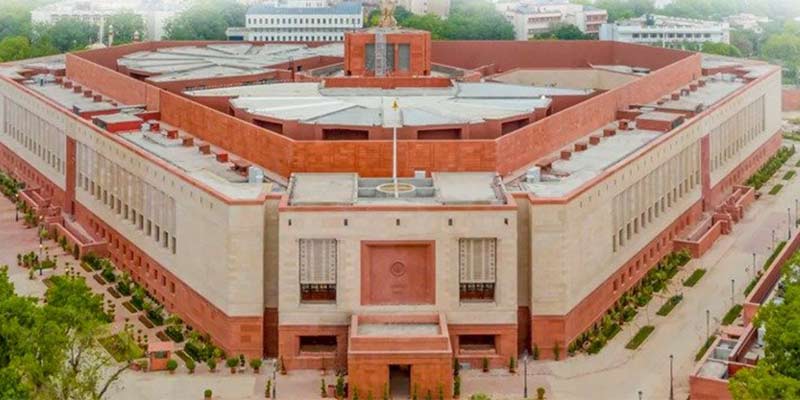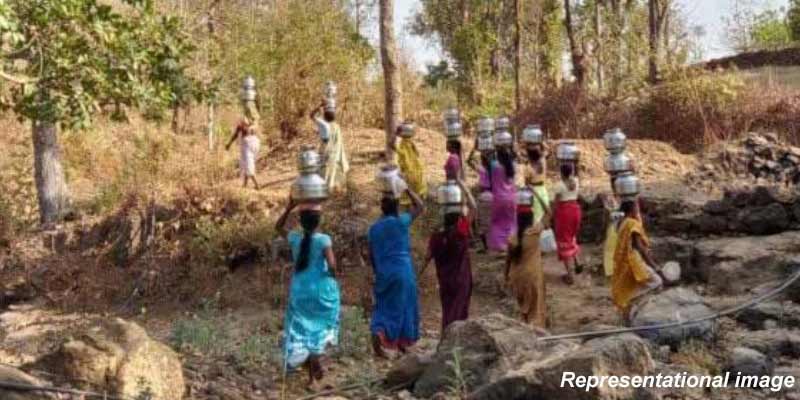- India
- Feb 12
Parliament passes Bills to include more than 50 communities in the list of STs
Last week, the Parliament passed three Bills to include more than 50 communities, including seven Particularly Vulnerable Tribal Groups (PVTGs), in the list of Scheduled Tribes (STs) of Jammu & Kashmir, Andhra Pradesh and Odisha.
Scheduled Tribes in India
• The population of Scheduled Tribes (STs) in the country, as per Census 2011 is 10.45 crore.
• STs constitute 8.6 per cent of the country’s total population and 11.3 percent of the total rural population. Population of ST males is 5.25 crore and ST females is 5.20 crore.
• There are over 700 Scheduled Tribes notified under Article 342 of the Constitution of India, spread over different states and Union Territories of the Country. Many tribes are notified in more than one state/UT.
• The list of Scheduled Tribes is state/UT specific and a community declared as a Scheduled Tribe in a state, need not be so in another state/UT.
• As per Census figures, literacy rate for STs in India improved from 47.1 per cent in 2001 to 59 per cent in 2011.
Criteria for inclusion in ST List:
The criteria followed for specification of a community as a Scheduled Tribe are:
i) Indications of primitive traits
ii) Distinctive culture
iii) Geographical isolation
iv) Shyness of contact with the community at large
v) Backwardness.
• These criteria are not spelt out in the Constitution but have become well established and accepted. It takes into account the definitions in the 1931 Census, the reports of the first Backward Classes Commission (Kalelkar), 1955, the Advisory Committee on Revision of SC/ST Lists (Lokur Committee), 1965 and the Joint Committee of Parliament on the Scheduled Castes and Scheduled Tribes Orders (Amendment) Bill, 1967 and Chanda Committee, 1969.
• The government of India on June 15, 1999 (as further amended on June 25, 2002) approved modalities for deciding claims for inclusion in, exclusion from and other modifications in Orders specifying List of STs.
• Accordingly, only those proposals which have been recommended and justified by concerned state government/UT administration can be processed further. Thereafter, it has to be concurred with by Registrar General of India (RGI) and National Commission for Scheduled Tribes (NCST) for consideration for amendment of legislation.
Notification of Scheduled Tribes
• Article 366(25) of the Constitution of India refers to Scheduled Tribes as those communities who are scheduled in accordance with Article 342 of the Constitution. This Article says that only those communities who have been declared as such by the President through an initial public notification or through a subsequent amending Act of Parliament will be considered to be Scheduled Tribes.
• Article 342 prescribes the procedure to be followed in the matter of specification of Scheduled Tribes.
• Under Clause (1) of Article 342, the President may, with respect to any State or Union Territory, and where it is a State, after consultation with the Governor thereof, notify tribes or tribal communities or parts of these as Scheduled Tribes. This confers on the tribe, or part of it, a Constitutional status invoking the safeguards provided for in the Constitution, to these communities in their respective states/UTs.
• Clause (2) of the Article 342 empowers the Parliament to pass a law to include in or exclude from the List of Scheduled Tribes, any tribe or tribal community or parts of these.
• The List of Scheduled Tribes is State/UT specific and a community declared as a Scheduled Tribe in a state need not be so in another state/UT.
Particularly Vulnerable Tribal Groups (PVTGs)
• Scheduled Tribe communities live in various ecological and geo-climatic conditions ranging from plains and forests to hills. Tribal groups are at different stages of social, economic and educational development.
• While some tribal communities have adopted a mainstream way of life, at the other end of the spectrum, there are certain Scheduled Tribes, known as Particularly Vulnerable Tribal Groups (PVTGs), who were earlier termed as Primitive Tribal Groups, whose characteristics have been covered under the Section on the Scheme for Conservation and Development of PVTGs.
The criteria followed for determination of PVTGs are:
i) A pre-agriculture level of technology
ii) A stagnant or declining population
iii) Low literacy
iv) A subsistence level of economy.
• The PVTGs, like other tribal groups, are eligible for the benefits of all the schemes of the government of India and state governments that are available to the general population, as well as schemes under Tribal Sub-Plan (TSP) of states and central government.
Three new Bills
i) Constitution (Jammu & Kashmir) Scheduled Tribes Order (Amendment) Bill, 2024
• The first list of Scheduled Tribes in respect of the erstwhile state of Jammu & Kashmir was notified in the Constitution (Jammu & Kashmir) Scheduled Tribes Order, 1989. The said list of Scheduled Tribes was amended with the Constitution (Scheduled Tribes) Order (Amendment) Act, 1991.
• With the provisions of the Jammu & Kashmir Reorganisation Act, 2019, the said list of Scheduled Tribes, presently applies to both the Union territory of Jammu & Kashmir and the Union territory of Ladakh.
• The administration of the Union territory of Jammu & Kashmir has requested to include the communities of ‘Gadda Brahmin’, ‘Koli’, ‘Paddari Tribe’ and ‘Pahari Ethnic Group’ in the list of Scheduled Tribes in UT of J&K.
• Accordingly, the Parliament passed the Constitution (Jammu and Kashmir) Scheduled Tribes Order (Amendment) Bill, 2024.
ii) The Constitution (Scheduled Castes) Order (Amendment) Bill, 2024
• This Bill proposed to amend the Constitution (Scheduled Tribes) Order, 1950 to modify the list of Scheduled Tribes in relation to the state of Andhra Pradesh.
• The list of Scheduled Tribes of Andhra Pradesh was last modified with the Andhra Pradesh Reorganisation Act, 2014.
• On the basis of recommendation of the state government of Andhra Pradesh and after consultation with the Registrar General of India and the National Commission for Scheduled Tribes, it was proposed to modify the list of Scheduled Tribes in respect of the state of Andhra Pradesh by amending the Constitution (Scheduled Tribes) Order, 1950.
Following inclusions were made in list of ST of Andhra Pradesh:
i) Inclusion of ‘Bondo Porja’ and ‘Khond Porja’, that are Particularly Vulnerable Tribal Groups (PVTGs), at entry 25 in the ST list of Andhra Pradesh.
ii) Inclusion of ‘Konda Savaras’, that are Particularly Vulnerable Tribal Groups (PVTGs), at entry 28 in the ST list of Andhra Pradesh.
iii) Constitution (Scheduled Castes and Scheduled Tribes) Orders (Amendment) Bill, 2024
• According to the provisions of articles 341 and 342 of the Constitution, the first list of the Scheduled Castes and the Scheduled Tribes were notified during the year 1950 in respect of various states and Union territories, with the Constitution (Scheduled Castes) Order, 1950 and the Constitution (Scheduled Tribes) Order, 1950, respectively.
• These lists were modified from time to time.
• List of STs of the state of Odisha has been modified, with the Constitution (Scheduled Castes and Scheduled Tribes) Orders (Amendment) Act, 2002.
• The state government of Odisha recommended for inclusion of four Particularly Vulnerable Tribal Groups (PVTGs) in their own names in the list of ST in respect to the state of Odisha.
These are:
i) Pauri Bhuyan, Paudi Bhuyan as synonyms of Bhuiya, Bhuyan.
ii) Chuktia Bhunjia as synonym of Bhunjia.
iii) Bondo as sub-entry under Scheduled Tribes ‘Bondo Poraja, Bonda Paroja, Banda Paroja’.
iv) Mankidia as synonym of Scheduled Tribe ‘Mankirdia’.
• The state government of Odisha recommended to omit two community names listed as Scheduled Castes namely — Tamadia and Tamudia — from the list of Scheduled Castes and to include the said community names in the Scheduled Tribes list.
• The state also recommended for inclusion of communities which have phonetic variations of the communities in the existing list of Scheduled Tribes.
Manorama Yearbook app is now available on Google Play Store and iOS App Store


